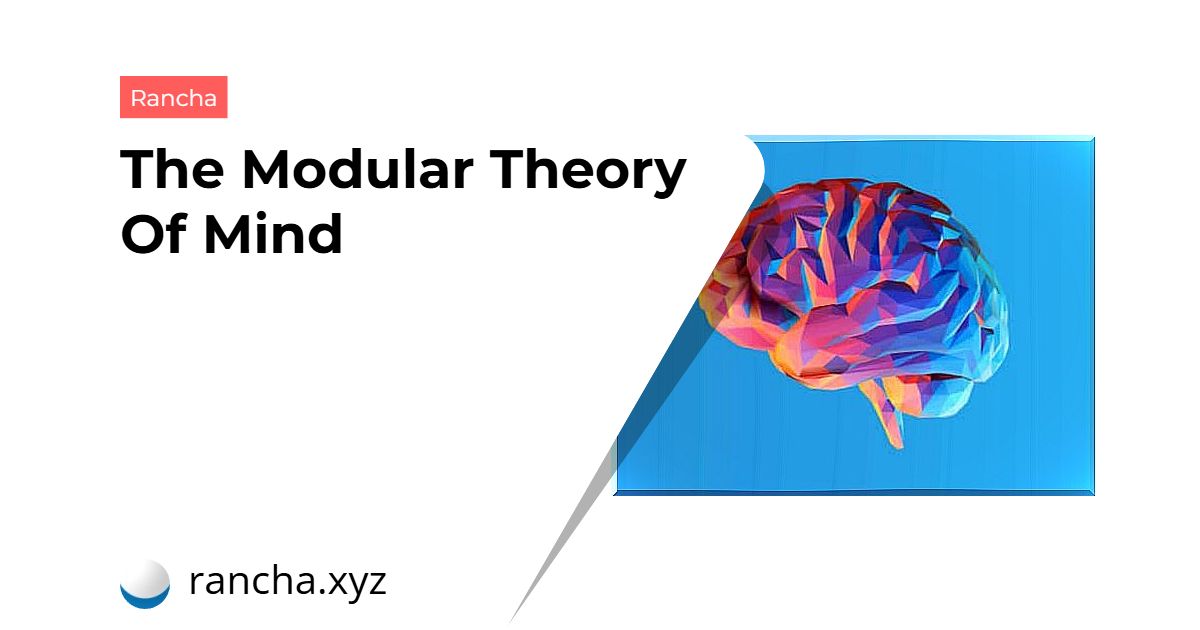Until the last decades of the last century, the idea that the brain functioned as an ‘online’ information processor remained widespread. This idea holds that all incoming data is computed globally across the mental system, resulting in output data. Since the modular theory of mind (TMM) supposed a break this concept and a paradigm shift.
When it was almost certain that the brain was a kind of computer capable of processing only a finite set of information per unit of time and that it could not process new data until it had finished operating with the previous information, TMM introduced the notion of processing. parallel or simultaneous; most importantly, it introduced the module concept.

Thus, we are faced with an alternative that has represented an insurmountable and positive breakthrough in advancing the understanding of cognition and the functioning of our brain, starting from the perspective that the brain is composed of highly specialized modules.
However, each module is not to be understood as a neuroanatomically delimited brain area. The emphasis is on functional specialization; thus, specific functions are performed in a modular way, being able to recruit different areas or different functional systems.
Basic Concepts of Modular Theory of Fundamentals of Mind
Traditionally, mental functioning was studied as a unitary process that came into play when confronted with any kind of information. Thus, regardless of the modality of information (perceptual, logical, social, mathematical, etc.), the brain would be activated as a whole that, from the input information, would produce output information already processed and resolved.
In the second half of the 1980s, Jerry Fodor, a renowned psycholinguist who is now seen as the true father of the cognitive sciences, hypothesized that the mind would be composed of a set of functional modules, of an innate nature, each focused on a specific activity with high specialization.
The mind would no longer be a serial and unitary computational organ in its functioning, but an integrated and coordinated set of specialized functions that, after offering each of them a specific result that would end up converging with the other results, would allow an efficient and compartmentalized distribution of mental subfunctions, which would contribute to the brain’s procedural optimization.
Furthermore, Fodor managed with his postulates – which resulted in the modular theory of mind – to generate an intermediate position in mental processing between behaviorism and cognitivism. His proposal defends that the modules of the mind are activated in a similar way to a behavior or reflection, but in an ‘inferential’ way, that is, being able to provide more information and in a more flexible way than the specificity that a reflection requires.
Essential features of modules
Fodor (1983) states that any modular system must, in whole or in part, meet certain criteria:
- Domain Specificity : Each module is specialized only in certain types of input information.
- Informational encapsulation : modules do not depend for their activation on other mental systems.
- Triggering requirement : if a type of information reaches the cognitive system, the module specialized in processing that information will necessarily be triggered irreversibly.
- High speed : the modules operate at high speed, probably thanks to the efficiency gains that the two previous points offer.
- Superficiality of output information : the result of modular processing is a very simple and basic type of information; a kind of building block.
- Limited accessibility.
- Characteristic ontogenesis: the ontogenic development of the modules occurs more or less regularly in each human being.
- Predefined neural architecture : it would support each module in a functional and structural way.
The so-called Müller-Lyer illusion is an observable and replicable mental phenomenon that, like many others, provides empirical support for this modular theory of mind. This illusion occurs when the person who is perceiving an illusory vision, even after realizing the falsity of the visual information, cannot help noticing it with its false attributes.

Conclusion
After the necessary reflections from TMM, we can conclude that the diversity of mental modules corresponds to the huge variety of needs that arise as the individual develops cognitively in a given context.
The widely accepted connectionist model of mental functioning, which holds that information is processed and stored in relatively differentiated neural circuits, would support the neurophysiological support of the modular theory of mind.
Finally, this model also accommodates the proven phenomenon of brain plasticity; in fact, it would be due to this neuroplasticity that the development of mental modules would take place, from a psychophysical point of view.
 rancha.xyz Be free to choose their own route to self-knowledge, health and balance of body and soul.
rancha.xyz Be free to choose their own route to self-knowledge, health and balance of body and soul.




